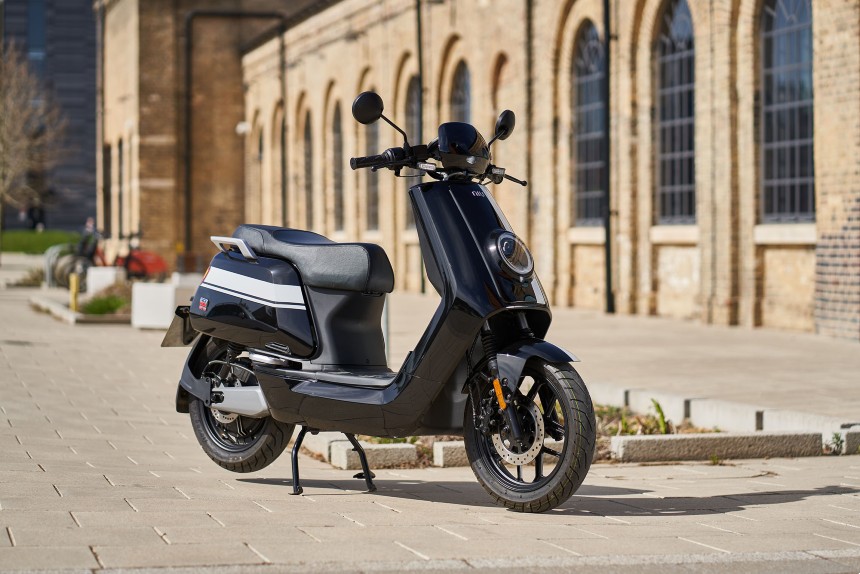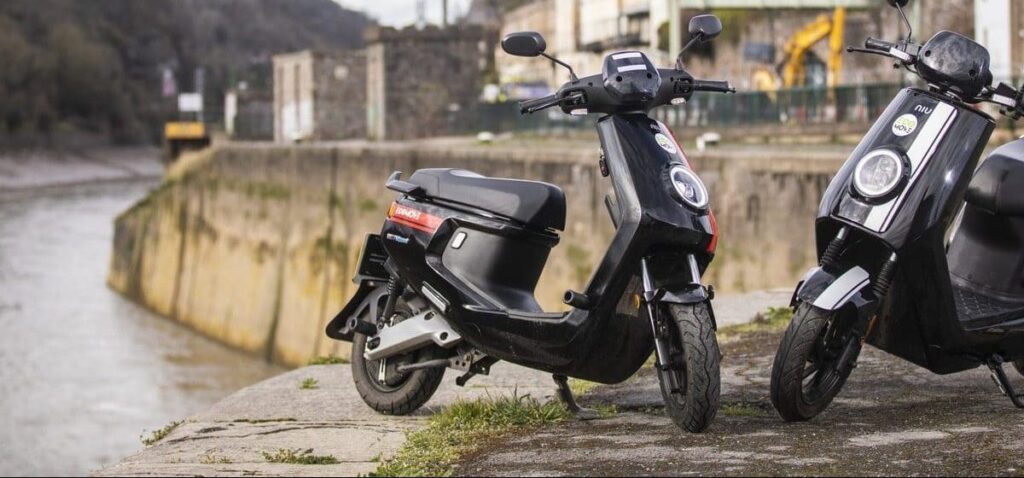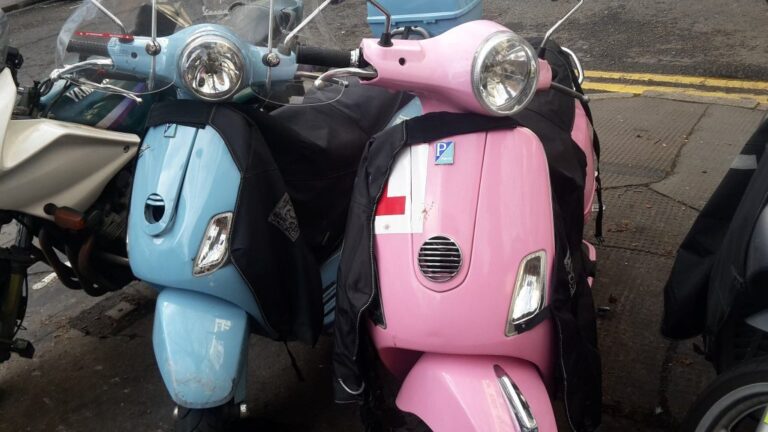Yes, mopeds can go on dual carriageways, but it depends on local traffic regulations. In many places, mopeds are allowed on these roads, as they provide a separate lane for slower-moving vehicles.
However, some regions may have restrictions or specific rules for mopeds on dual carriageways, so it’s crucial to check and follow local traffic laws. Riders should prioritize safety, wear appropriate gear, and be aware of faster traffic.
Always adhere to the designated speed limits and guidelines to ensure a secure and legal journey on dual carriageways.
What is a Dual Carriageway?

A dual carriageway is a type of road infrastructure designed to enhance traffic flow and safety. In simple terms, it consists of two separate carriageways, each catering to traffic moving in opposite directions. The defining feature is the central reservation, which can be a physical barrier or a median, providing a clear separation between the lanes.
Key Characteristics
Multiple Lanes: Dual carriageways typically have multiple lanes on each side. This allows for the segregation of slower and faster-moving vehicles, contributing to a smoother traffic flow.
High Speed Limits: Due to the separated lanes and reduced risk of head-on collisions, dual carriageways often have higher speed limits compared to single-carriageway roads. This design encourages more efficient long-distance travel.
Controlled Access: Dual carriageways often feature controlled access points, such as on-ramps and off-ramps, regulating the entry and exit of vehicles. This helps maintain a steady flow of traffic and minimizes congestion.
Safety Measures: To enhance safety, dual carriageways may include safety features like crash barriers, reflective markings, and adequate signage. These elements contribute to better visibility and awareness for drivers.
Urban and Suburban Presence: Dual carriageways are commonly found in both urban and suburban areas, serving as major transportation routes. They play a crucial role in connecting different regions and facilitating efficient commuting.
What Is a moped?
A moped is a small, lightweight motorized vehicle equipped with pedals for propulsion, usually with an engine displacement not exceeding 50cc (cubic centimeters). It serves as an economical and convenient means of personal transportation.
Typical Features
Pedals: One defining feature is the presence of pedals, allowing the rider to manually propel the moped. This feature differentiates mopeds from scooters or motorcycles.
Engine Size: Mopeds typically have small engines, often limited to 50cc. This makes them fuel-efficient and environmentally friendly.
Automatic Transmission: Many mopeds are equipped with automatic transmissions, simplifying the riding experience, especially for individuals new to motorized two-wheelers.
Step-Through Design: Mopeds often have a step-through design, making it easy for riders to mount and dismount. This design enhances the user-friendly nature of these vehicles.
Limited Speed: Due to their small engine size, mopeds generally have limited top speeds. This makes them suitable for local commuting rather than high-speed travel on highways.
Limitations
Highway Limitations: Mopeds are typically not designed for highway use, as their lower speed limits and small engine size may pose safety concerns on faster roads.
Cargo Capacity: Mopeds have limited cargo capacity compared to larger motorcycles or scooters, making them suitable for short-distance trips with minimal luggage.
Weather Exposure: Unlike enclosed vehicles, riders on mopeds are exposed to weather conditions. This may limit their practicality in inclement weather.
What are the general traffic rules for mopeds?
Licensing and Registration: Riders typically need a valid moped license or motorcycle license, and in some areas, moped registration is required.
Traffic Lanes: Mopeds usually use regular traffic lanes, staying on the right side of the road. Bike lanes may also be utilized where available.
Speed Limits: Sticking to posted speed limits is essential. Mopeds often have lower speed limits than other vehicles, emphasizing their use for local commuting.
Helmet Usage: Many jurisdictions mandate helmet use for moped riders. Wearing protective gear enhances safety and reduces the risk of injury.
Signals and Signage: Moped operators must obey traffic signals and signage. Hand signals for turning may also be required where applicable.
Are there specific regulations on dual carriageways?
Yes, specific regulations on dual carriageways for mopeds vary by location. Some areas permit mopeds, while others may have restrictions or designate specific lanes for slower vehicles on these high-speed roads.
Permitted Access
Regulations regarding mopeds on dual carriageways vary. In some areas, mopeds are permitted, while others may have restrictions or specific lanes designated for slower vehicles.
Minimum Speed Limits
Dual carriageways often have minimum speed limits. Moped riders must be aware of these limits to ensure safe integration with faster traffic.
Shoulder Use
In certain regions, mopeds may be allowed to use the shoulder of dual carriageways, providing a designated space away from faster-moving vehicles.
Prohibited Areas
Some jurisdictions may prohibit mopeds on certain sections of dual carriageways or high-speed roads. Understanding these restrictions is crucial for compliance.
Safety Requirements
Additional safety measures, such as reflective clothing or specific lighting, may be required for mopeds on dual carriageways to enhance visibility.
Can Mopeds Legally Use Dual Carriageways?
Moped legality on dual carriageways varies by location; some allow it, others may have restrictions. Riders should check local regulations for clarity.
Legal Aspects
Jurisdictional Variations: The permissibility of mopeds on dual carriageways varies by jurisdiction. While some areas explicitly permit mopeds on these high-speed roads, others may have restrictions or specific conditions in place.
Traffic Laws: Moped riders must adhere to general traffic laws regardless of the road type. This includes obeying speed limits, signaling appropriately, and respecting right-of-way rules, even when using dual carriageways.
Restrictions or Permissions in Various Jurisdictions
Permission with Conditions: Certain regions permit mopeds on dual carriageways but may impose conditions to enhance safety. This could include restrictions on specific lanes, lower speed limits for mopeds, or additional safety requirements.
Prohibitions: In some jurisdictions, mopeds might be explicitly prohibited on certain sections of dual carriageways, especially those with high-speed limits or significant traffic volumes.
Designated Lanes: To improve safety, dual carriageways in certain areas may have designated lanes for slower vehicles, including mopeds. This segregation helps to reduce the risk associated with the speed differential between mopeds and faster-moving traffic.
Minimum Speed Limits: Some regions may set minimum speed limits on dual carriageways, and mopeds are expected to comply. This ensures a smooth flow of traffic and minimizes disruptions caused by slower-moving vehicles.
Safety Requirements: Additional safety regulations may be in place, such as requiring moped riders to wear reflective gear or use specific lighting when on dual carriageways. These measures enhance the visibility of mopeds, especially in situations where they share the road with faster vehicles.
What are the advantages and potential challenges associated with allowing mopeds on dual carriageways?

Allowing mopeds on dual carriageways is good for quick local travel and less traffic, but challenges include safety issues due to speed differences and the need for proper infrastructure.
Advantages of Allowing Mopeds on Dual Carriageways
Efficient Local Commuting
Allowing mopeds on dual carriageways provides an efficient mode of transportation for local commuting, especially in urban and suburban areas with heavy traffic.
Reduced Traffic Congestion
Mopeds contribute to reducing traffic congestion by offering a compact and nimble alternative, taking up less space on the road compared to larger vehicles.
Fuel Efficiency
Mopeds are generally fuel-efficient, contributing to environmental sustainability and offering a cost-effective option for both riders and the community.
Parking Convenience
Mopeds require less parking space, addressing urban parking challenges. This can encourage the use of mopeds for short-distance travel, reducing the demand for larger parking areas.
Lower Emissions
With smaller engine sizes, mopeds tend to produce lower emissions, promoting cleaner air quality in urban areas and aligning with environmental conservation efforts.
Potential Challenges
Safety Concerns
The speed differential between mopeds and faster vehicles on dual carriageways can pose safety challenges. Moped riders need to be vigilant to avoid accidents and ensure their visibility to other road users.
Limited Speed Capability
Mopeds often have lower speed capabilities than other vehicles on dual carriageways. This may lead to challenges in maintaining a consistent flow of traffic, potentially causing congestion.
Weather Exposure
Moped riders are exposed to the elements, making them more susceptible to adverse weather conditions. Rain, strong winds, or extreme temperatures can impact rider comfort and safety.
Infrastructure Considerations
Dual carriageways may not be adequately equipped to accommodate mopeds safely. The lack of designated lanes or appropriate signage could lead to challenges in integrating mopeds with faster traffic.
Perception and Attitudes
The acceptance of mopeds on high-speed roads might vary among drivers. Some motorists may perceive mopeds as obstacles, leading to potential conflicts on the road.
Noise Levels
Mopeds, especially those with two-stroke engines, can generate higher noise levels. This may contribute to noise pollution, particularly in residential areas near dual carriageways.
FAQ
How fast can a 50cc moped go?
The speed of a 50cc moped typically ranges from 25 to 45 mph, depending on factors like design and weight.
How fast does a 125cc moped go?
A 125cc moped can reach speeds of around 55 to 65 mph, varying based on factors like design and rider weight.
Can a moped be 125cc?
Yes, mopeds can have an engine size of 125cc, but specific regulations may vary by region.
Can a 50cc moped go 60 mph?
No, a 50cc moped is not designed to reach speeds of 60 mph; its typical range is 25 to 45 mph.
Can a 50cc moped go on the motorway?
In many places, 50cc mopeds are not allowed on motorways due to their lower speed capabilities.
What is the top speed of a moped?
Mopeds’ top speeds vary; 50cc ones usually range from 25 to 45 mph, while 125cc mopeds can reach 55 to 65 mph.
Are mopeds safe?
When ridden responsibly and with proper safety gear, mopeds are generally considered safe for local commuting.
How common are moped accidents?
Moped accidents occur, but their frequency depends on factors like rider behavior, traffic conditions, and safety measures.
Are mopeds hard to ride?
Mopeds are designed for ease of use, and many find them relatively easy to ride, especially with proper training and practice.
Final words
If mopeds can go on dual carriageways depends on local rules. It’s good for local trips, but safety matters, so following traffic rules is important. Moped riders should know and follow the local guidelines for a safe and legal ride on dual carriageways.

